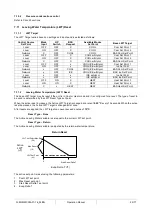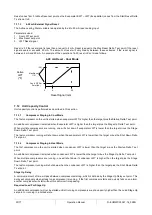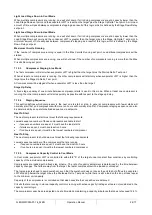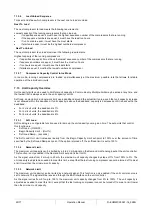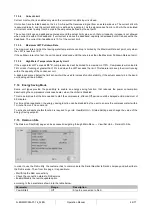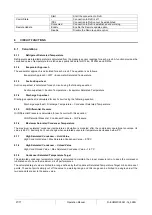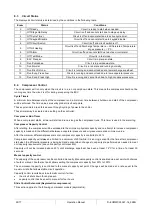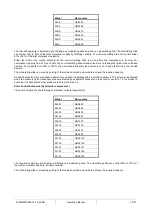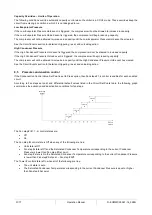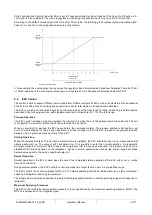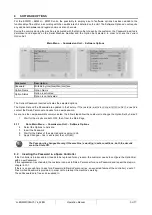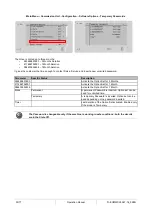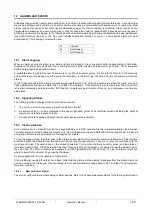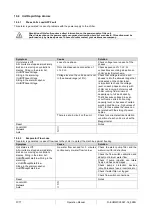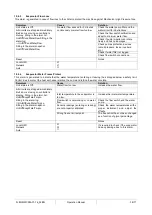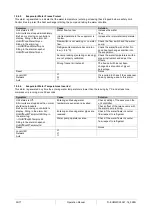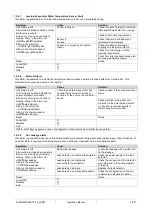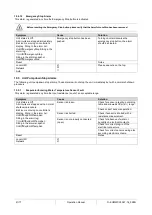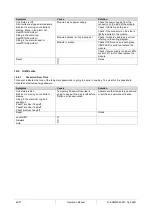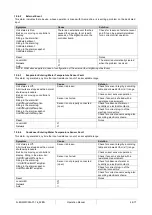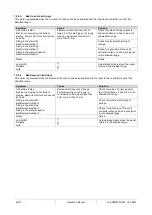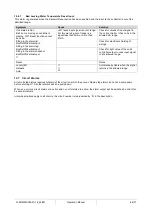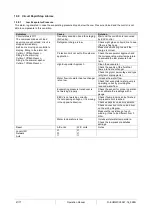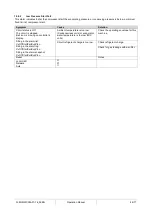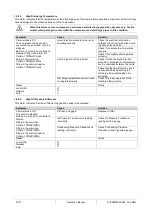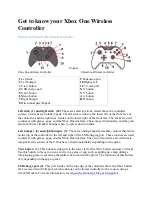
D
–EOMWC00A07-16_02EN
Operation Manual
36/77
10 ALARMS AND EVENTS
Situations may arise that require some action from the chiller or that should be logged for future reference. A condition that
requires a shutdown and/or lockout is an alarm. Alarms may cause a normal stop (with pumpdown) or a rapid stop. Most
alarms require manual reset, but some reset automatically when the alarm condition is corrected. Other conditions can
trigger what is known as an event, which may or may not cause the chiller to respond with a specific action in response.
All alarms and events are logged. In the following sections it will also be indicated how each alarm can be cleared between
local HMI, Network (by any of the high level interfaces Modbus, Bacnet or Lon) or if the specific alarm will clear
automatically. The following symbols are used:
Allowed
Not allowed
Not foreseen
10.1 Alarm Logging
When an alarm occurs, the alarm type, date, and time are stored in the active alarm buffer corresponding to that alarm
(viewed on the Alarm Active screens) also in the alarm history buffer (viewed on the Alarm Log screens). The active alarm
buffers hold a record of all current alarms.
A separate alarm log stores the last 25 alarms to occur. When an alarm occurs, it is put into the first slot in the alarm log
and all others are moved down one, dropping the last alarm. In the alarm log, the date and time the alarm occurred are
stored.
In the Snapshot page all the alarms are also stored together with a list of running parameters when the alarm occurred.
These parameters include unit state, LWT, and EWT for all alarms. If the alarm is a circuit alarm, then the circuit state,
refrigerant pressures and temperatures, EXV position, compressor load, number of fans on, and compressor run time are
also stored.
10.2 Signaling Alarms
The following actions will signal that an alarm has occurred:
1. The unit or a circuit will execute a rapid or pumpdown shutoff.
2. An alarm bell icon
will be displayed in the upper right-hand corner of all controller screens including the optional
remote user interface panel’s screens.
3. An optional field supplied and wired remote alarm device will be activated.
10.3 Clearing Alarms
Active alarms can be cleared through the keypad/display or a BAS network. Alarms are automatically cleared when
controller power is cycled. Alarms are cleared only if the conditions required to initiate the alarm no longer exist. All ala rms
and groups of alarms can be cleared via the keypad or netwo rk.
To use the keypad, follow the Alarm links to the Alarms screen, which will show Active Alarms and Alarm Log. Select Active
Alarm and press the wheel to view the Alarm List (list of current active alarms). They are in order of occurrence with the
most recent on top. The second line on the screen shows Alm Cnt (number of alarms currently active) and the status of
the alarm clear function. Off indicates that the Clear function is off and the alarm is not cleared. Press the wheel to go to
the edit mode. The Alm Clr (alarm clear) parameter will be highlighted with OFF showing. To clear all alarms, rotate the
wheel to select ON and enter it by pressing the wheel.
An active password is not necessary to clear alarms.
If the problem(s) causing the alarm have been corrected, the alarms will be cleared, disappear from the Active Alarm list
and be posted in the Alarm Log. If not corrected, the On will immediately change back to OFF and the unit will remain in
the alarm condition.
10.3.1
Remote Alarm Signal
The unit is configured to allow field wiring of alarm devices. Refer to unit onboard documentation for field wiring information.

